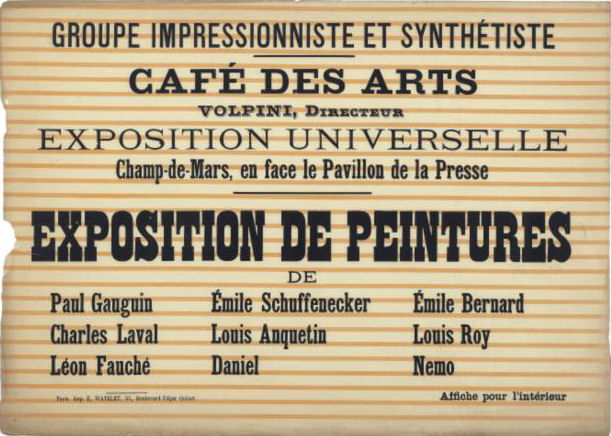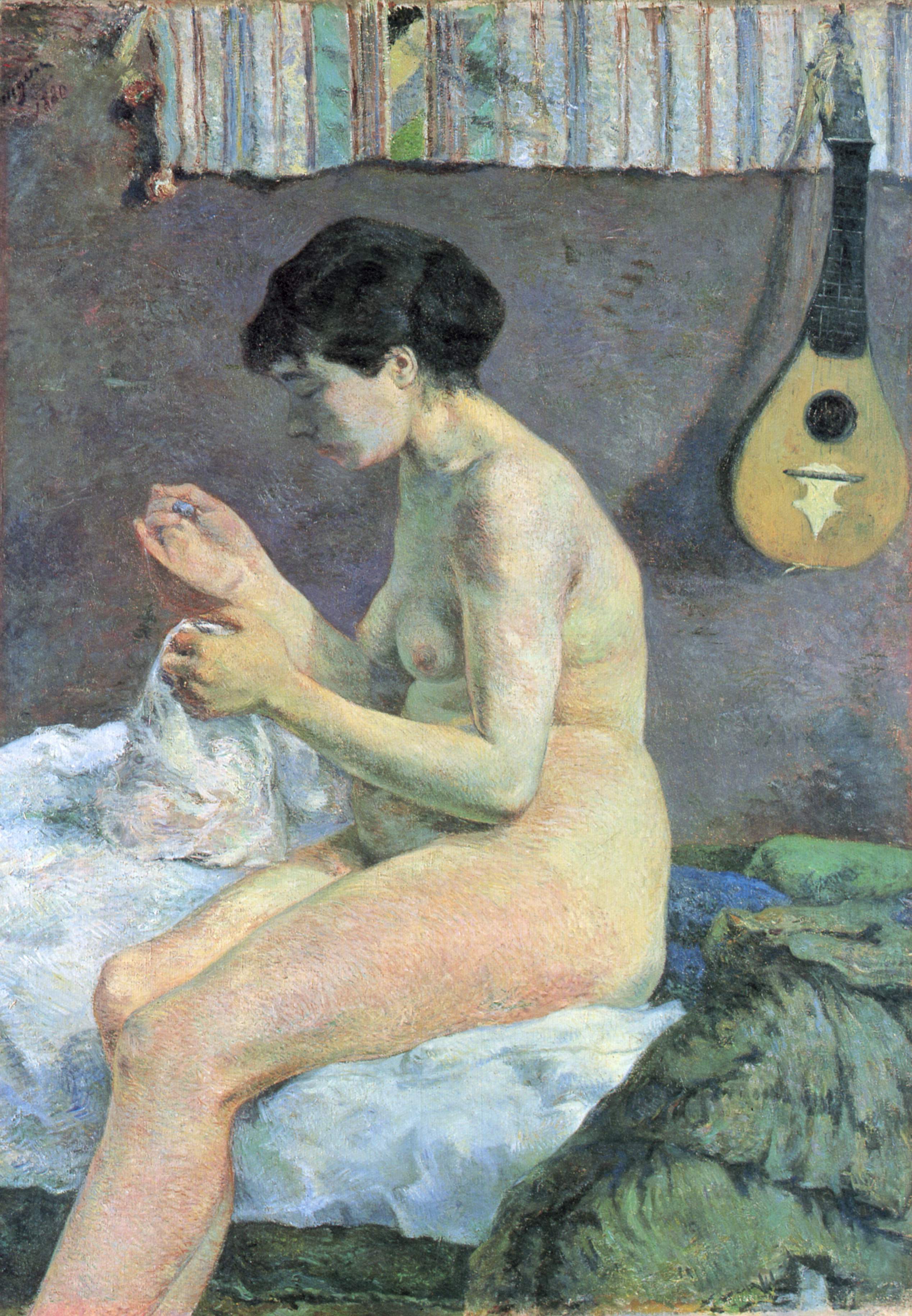|
Calvary Cemetery (Atuona)
Calvary Cemetery () is the main cemetery in Atuona, Hiva Oa, Hiva ‘Oa, French Polynesia. It is located on a hillside on the eastern edge of town, overlooking the anchorage on Atuona Bay. The cemetery is the final resting place of French Post-Impressionism, Post-Impressionist painter Paul Gauguin, as well as of Belgian singer Jacques Brel. See also * Marquesas Islands * French Polynesia * Paul Gauguin Cultural Center References External links * Cemeteries in France Marquesas Islands Cemeteries in Oceania Jacques Brel Paul Gauguin {{cemetery-stub ... [...More Info...] [...Related Items...] OR: [Wikipedia] [Google] [Baidu] |
Atuona
Atuona, located on Atuona Bay on the southern side of Hiva Oa island, French Polynesia, is the administrative centre of the Communes of France, commune (municipality) of Hiva-Oa. Atuona was the capital of all the Marquesas Islands but it has been replaced by Taioha'e (on Nuku Hiva). The peak Temetiu, rising to 1,213 m (3,980 ft) above sea level, towers above the town. Atuona was the final home of Paul Gauguin, who died there in 1903 and is buried in Calvary Cemetery, Atuona, Calvary Cemetery, which overlooks the town. The Belgian singer Jacques Brel is also buried there. In 2003, construction on the Paul Gauguin Cultural Center was completed in Atuona. Climate See also *French Polynesia References External links Gauguin Cultural Center Populated places in the Marquesas Islands {{FrenchPolynesia-geo-stub ... [...More Info...] [...Related Items...] OR: [Wikipedia] [Google] [Baidu] |
Hiva Oa
With its , Hiva Oa ( Marquesan: Hivaoa) is the second largest island in the Marquesas Islands, in French Polynesia, an overseas territory of France in the Pacific Ocean. Located at 9 45' south latitude and 139 W longitude, it is the largest island of the southern Marquesas group. Around 2,200 people reside on the island. A volcano, Temetiu, is Hiva Oa's highest point with . History Colonial period The first recorded sighting of Hiva Oa by the Europeans was by the Spanish expedition of Álvaro de Mendaña on 21 July 1595. They charted it as ''Dominica''. The island was briefly occupied by german forces under the command of Admiral Von Spee in October 1914. Overview Administratively, Hiva Oa is part of the commune (municipality) of Hiva-Oa, itself in the administrative subdivision of the Marquesas Islands. Atuona, on the coast of Hiva Oa island, is the administrative centre of the commune. Atuona was formerly the seat of government for all of the Marquesas Islands, but it h ... [...More Info...] [...Related Items...] OR: [Wikipedia] [Google] [Baidu] |
French Polynesia
French Polynesia ( ; ; ) is an overseas collectivity of France and its sole #Governance, overseas country. It comprises 121 geographically dispersed islands and atolls stretching over more than in the Pacific Ocean, South Pacific Ocean. The total land area of French Polynesia is , with a population of 278,786 (Aug. 2022 census) of which at least 205,000 live in the Society Islands and the remaining population lives in the rest of the archipelago. French Polynesia is divided into five island groups: the Austral Islands; the Gambier Islands; the Marquesas Islands; the Society Islands (comprising the Leeward Islands (Society Islands), Leeward and Windward Islands (Society Islands), Windward Islands); and the Tuamotus. Among its 121 islands and atolls, 75 were inhabited at the 2017 census. Tahiti, which is in the Society Islands group, is the most populous island, being home to nearly 69% of the population of French Polynesia . Papeete, located on Tahiti, is the capital of French ... [...More Info...] [...Related Items...] OR: [Wikipedia] [Google] [Baidu] |
Atuona Bay
Atuona Bay ( French Baie d'Atuona or Baie Tahauku) is a small inlet on the north shore of Ta‘a ‘Oa (the Bay of Traitors), on the southern coast of Hiva ‘Oa. The bay is traditionally called ''Vevau'' in Marquesan. At the head of the bay lies Atuona, chief town of the southern Marquesas Islands. Atuona Bay is separated from the harbor of Taha Uku to its east, by a headland called Feki, and from westernmore extensions of Ta'a Oa by a small rock called Hanakee. Related article *French Polynesia French Polynesia ( ; ; ) is an overseas collectivity of France and its sole #Governance, overseas country. It comprises 121 geographically dispersed islands and atolls stretching over more than in the Pacific Ocean, South Pacific Ocean. The t ... References Bodies of water of the Marquesas Islands Bays of the Pacific Ocean {{FrenchPolynesia-geo-stub ... [...More Info...] [...Related Items...] OR: [Wikipedia] [Google] [Baidu] |
Post-Impressionism
Post-Impressionism (also spelled Postimpressionism) was a predominantly French art movement that developed roughly between 1886 and 1905, from the last Impressionist exhibition to the birth of Fauvism. Post-Impressionism emerged as a reaction against Impressionists' concern for the naturalistic depiction of light and colour. Its broad emphasis on abstract qualities or symbolic content means Post-Impressionism encompasses Les Nabis, Neo-Impressionism, Symbolism, Cloisonnism, the Pont-Aven School, and Synthetism, along with some later Impressionists' work. The movement's principal artists were Paul Cézanne (known as the father of Post-Impressionism), Paul Gauguin, Vincent van Gogh and Georges Seurat. The term Post-Impressionism was first used by art critic Roger Fry in 1906.Peter Morrin, Judith Zilczer, William C. Agee, ''The Advent of Modernism. Post-Impressionism and North American Art, 1900-1918'', High Museum of Art, 1986 Critic Frank Rutter in a review of the Salon ... [...More Info...] [...Related Items...] OR: [Wikipedia] [Google] [Baidu] |
Paul Gauguin
Eugène Henri Paul Gauguin (; ; 7 June 1848 – 8 May 1903) was a French painter, sculptor, printmaker, ceramist, and writer, whose work has been primarily associated with the Post-Impressionist and Symbolist movements. He was also an influential practitioner of wood engraving and woodcuts as art forms. While only moderately successful during his life, Gauguin has since been recognized for his experimental use of color and Synthetist style that were distinct from Impressionism. Gauguin was born in Paris in 1848, amidst the tumult of Europe's revolutionary year. In 1850, Gauguin's family settled in Peru, where he experienced a privileged childhood that left a lasting impression on him. Later, financial struggles led them back to France, where Gauguin received formal education. Initially working as a stockbroker, Gauguin started painting in his spare time, his interest in art kindled by visits to galleries and exhibitions. The financial crisis of 1882 significantly impact ... [...More Info...] [...Related Items...] OR: [Wikipedia] [Google] [Baidu] |
Jacques Brel
Jacques Romain Georges Brel (; 8 April 1929 – 9 October 1978) was a Belgian singer and actor who composed and performed theatrical songs. He generated a large, devoted following—initially in Belgium and France, but later throughout the world. He is considered a master of the modern chanson. Although he recorded most of his songs in French and occasionally in Dutch, he became an influence on English-speaking songwriters and performers, such as Scott Walker, David Bowie, Brett Anderson, Alex Harvey, Marc Almond, Neil Hannon, and Rod McKuen. English translations of his songs were recorded by many performers, including Bowie, Walker, Anderson, Ray Charles, Judy Collins, John Denver, The Kingston Trio, Nina Simone, Shirley Bassey, James Dean Bradfield, Frank Sinatra, and Andy Williams. Brel was a successful actor, appearing in 10 films. He directed two films, one of which, '' Le Far West'', was nominated for the Palme d'Or at the Cannes Film Festival in 1973. Having sold o ... [...More Info...] [...Related Items...] OR: [Wikipedia] [Google] [Baidu] |
Tomb Of Paul Gauguin - Apr 2024
A tomb ( ''tumbos'') or sepulchre () is a repository for the remains of the dead. It is generally any structurally enclosed interment space or burial chamber, of varying sizes. Placing a corpse into a tomb can be called ''immurement'', although this word mainly means entombing people alive, and is a method of final disposition, as an alternative to cremation or burial. Overview The word is used in a broad sense to encompass a number of such types of places of interment or, occasionally, burial, including: * Architectural shrines – in Christianity, an architectural shrine above a saint's first place of burial, as opposed to a similar shrine on which stands a reliquary or feretory into which the saint's remains have been transferred * Burial vault – a stone or brick-lined underground space for multiple burials, originally vaulted, often privately owned for specific family groups; usually beneath a religious building such as a * Church * Cemetery * Churchyard * Ca ... [...More Info...] [...Related Items...] OR: [Wikipedia] [Google] [Baidu] |
Marquesas Islands
The Marquesas Islands ( ; or ' or ' ; Marquesan language, Marquesan: ' (North Marquesan language, North Marquesan) and ' (South Marquesan language, South Marquesan), both meaning "the land of men") are a group of volcano, volcanic islands in French Polynesia, an overseas collectivity of France in the southern Pacific Ocean. Their highest point is the peak of Mont Oave, Mount Oave () on Ua Pou island, at 1,230 m (4,035 ft) above sea level. Archaeological research suggests the islands were colonized in the 10th century AD by voyagers from West Polynesia. Over the centuries that followed, the islands have maintained a "remarkably uniform culture, biology and language". The Marquesas were named after the 16th-century Spanish Viceroy of Peru, the García Hurtado de Mendoza, 5th Marquis of Cañete, Marquis of Cañete (), by navigator , who visited them in 1595. The Marquesas Islands constitute one of the administrative divisions of French Polynesia, five administrative di ... [...More Info...] [...Related Items...] OR: [Wikipedia] [Google] [Baidu] |
Paul Gauguin Cultural Center
The Paul Gauguin Cultural Center () was finished in 2003, to coincide with the 100th anniversary of the death of Paul Gauguin, in Atuona, on Hiva Oa, in the Marquesas Islands (French Polynesia). Atuona was Paul Gauguin's home for the last three years of his life, and he is buried in the cemetery (Calvary Cemetery, ''French'': Cimetière Calvaire) there. See also * Paul Gauguin Museum, Tahiti Tahiti (; Tahitian language, Tahitian , ; ) is the largest island of the Windward Islands (Society Islands), Windward group of the Society Islands in French Polynesia, an overseas collectivity of France. It is located in the central part of t ..., French Polynesia. External links Gauguin Cultural Center Culture of the Marquesas Islands Gauguin, Paul, Cultural Centre Art museums and galleries in French Polynesia Buildings and structures completed in 2003 Art museums and galleries established in 2003 2003 establishments in French Polynesia Paul Gauguin 21st-century arch ... [...More Info...] [...Related Items...] OR: [Wikipedia] [Google] [Baidu] |
Cemeteries In France
A cemetery, burial ground, gravesite, graveyard, or a green space called a memorial park or memorial garden, is a place where the remains of many death, dead people are burial, buried or otherwise entombed. The word ''cemetery'' (from Greek language, Greek ) implies that the land is specifically designated as a burial ground and originally applied to the Ancient Rome, Roman catacombs. The term ''graveyard'' is often used interchangeably with cemetery, but a graveyard primarily refers to a burial ground within a churchyard. The intact or cremated remains of people may be interred in a grave, commonly referred to as burial, or in a tomb, an "above-ground grave" (resembling a sarcophagus), a mausoleum, a columbarium, a niche, or another edifice. In Western world, Western cultures, funeral ceremonies are often observed in cemeteries. These ceremonies or rites of passage differ according to culture, cultural practices and religion, religious beliefs. Modern cemeteries often inclu ... [...More Info...] [...Related Items...] OR: [Wikipedia] [Google] [Baidu] |







